India is rich in monuments, and richer still in mythology. Sometimes the two get mixed up and confound even informed Indians. The Ramayana and Mahabharata are the most famous Indian epics. Over the centuries, these highly popular epics have been narrated, written and rewritten ever so often. The end result is that these epics have spawned many sequels, prequels, and quaint regional variants. In most Indian villages, you will find locals insisting that some real or apocryphal event from these epics happened right in their village. They are not trying to con you: these epics are so strong, that they have become part of THEIR history. About 60 Kms south of Chennai lies Mamallapuram, which is famous for its 7th century stone monuments. Here, facts and fantasy are hopelessly entangled.
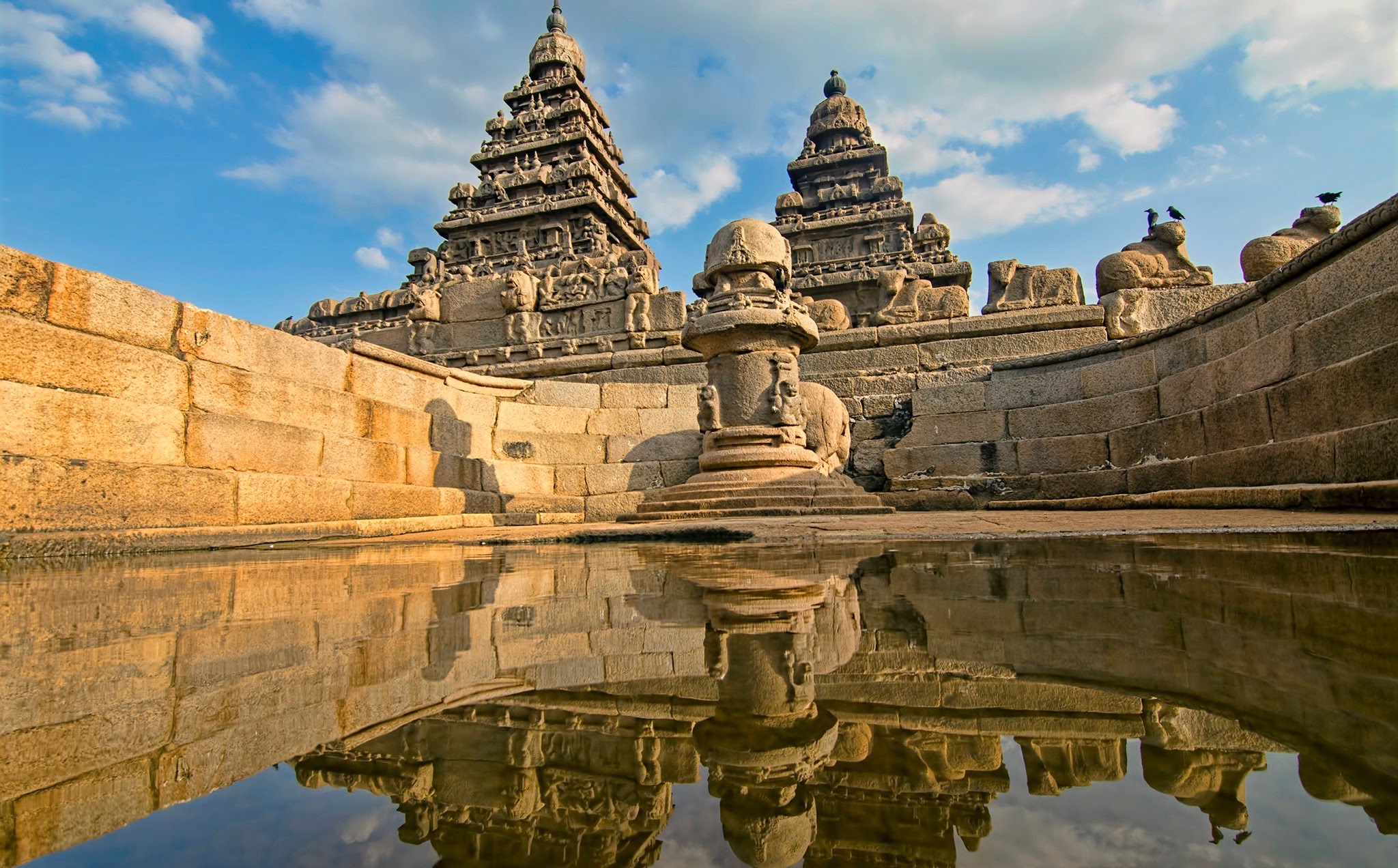
Consider the ‘Draupadi’s Bath’ on the Mamallapuram hillock: locals would tell you that this rocky natural pool is where Draupadi, the common wife of the Pandavas (heroes of the Mahabharata), bathed when they camped here. A little further north is a rocky shelter called ‘Bhima’s Kitchen’. Why, this is where the Pandava prince, Bhima, cooked food when they lived in exile in Mamallapuram! If you missed these stories in the Mahabharata, don’t despair – these are purely local traditions.
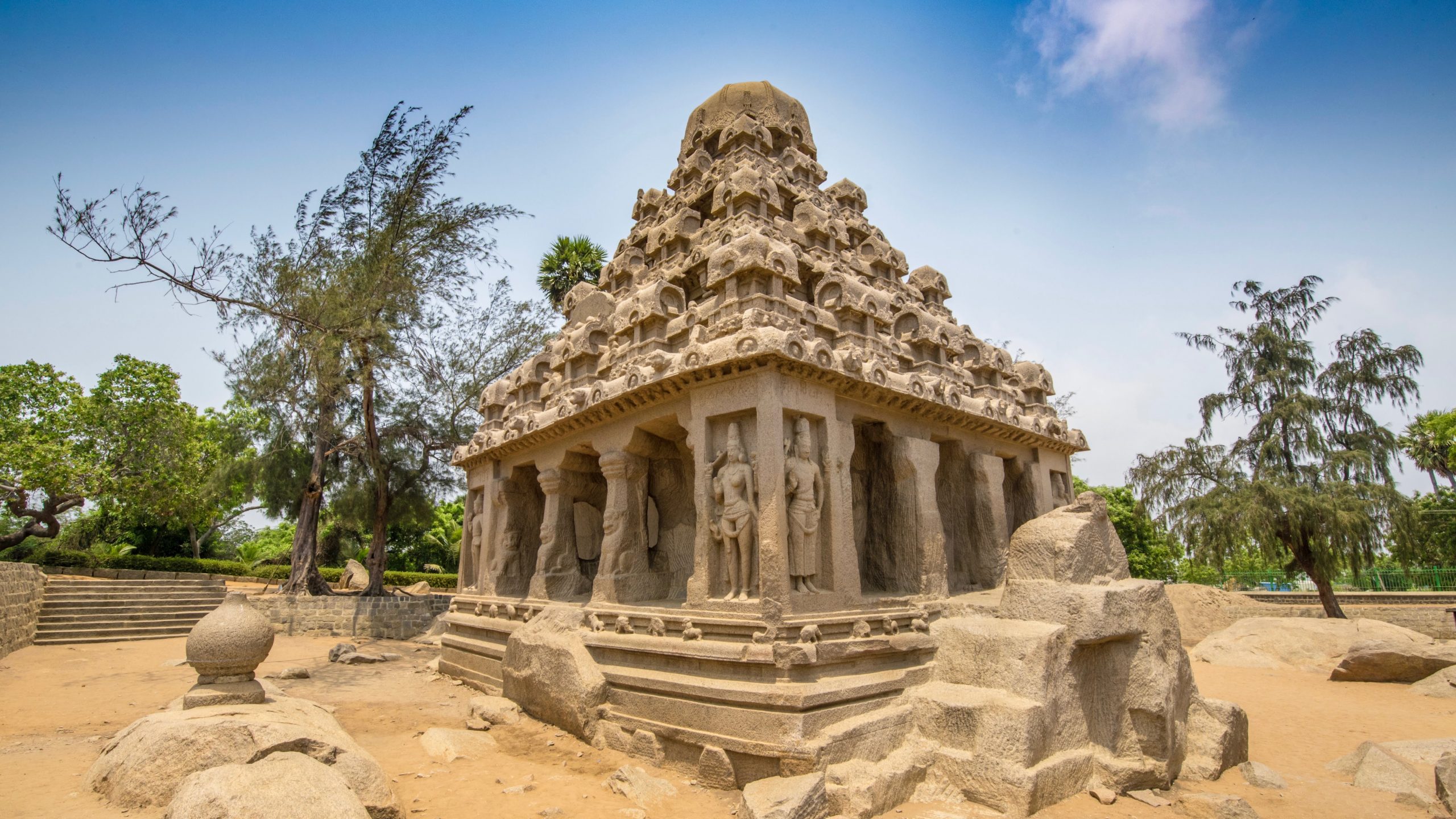
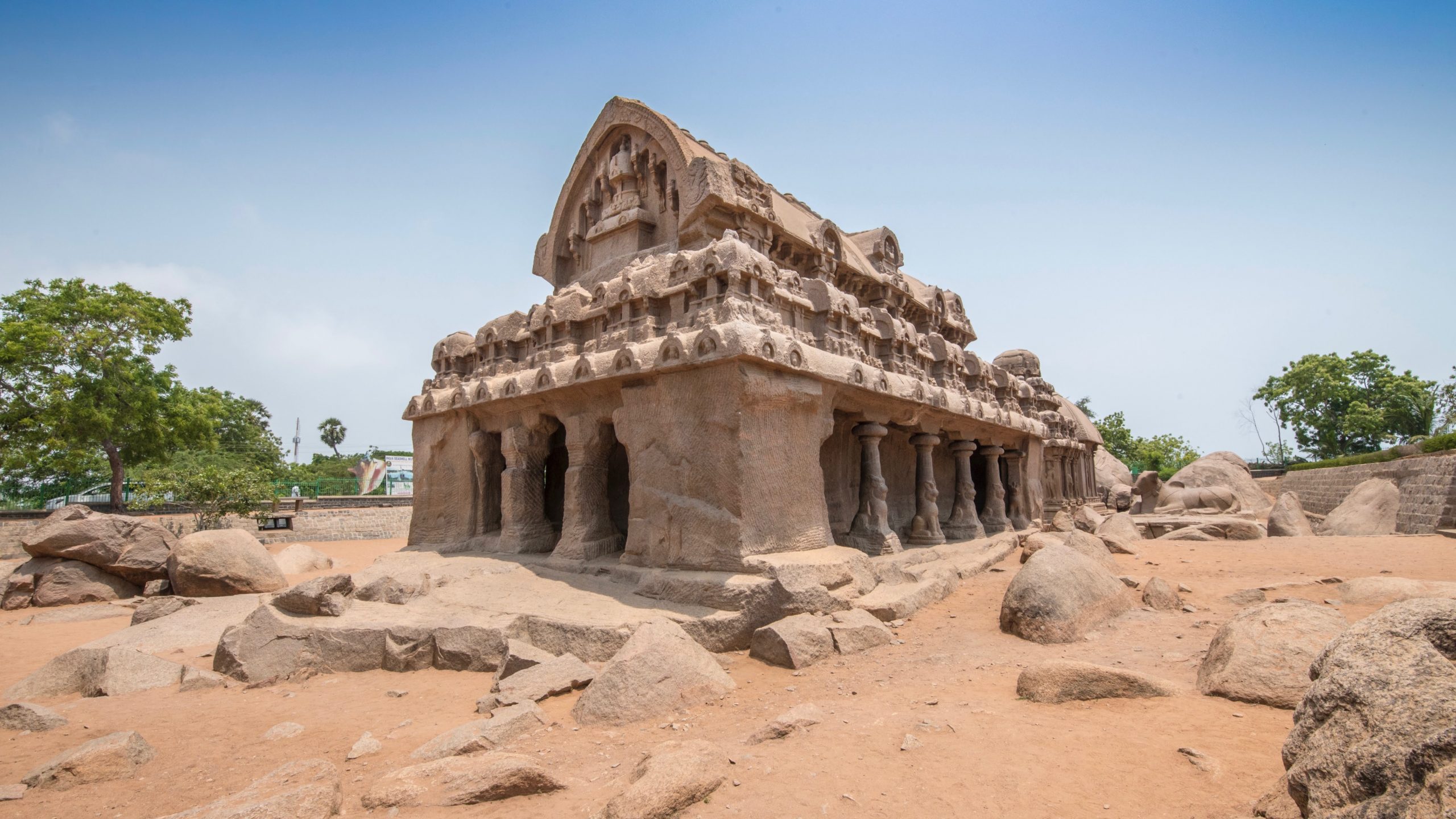
Southern Mamallapuram has five unfinished pagodas known as ‘Pancha Pandava Rathas,’ or the ‘Chariots of the five Pandavas’. This project was abandoned after its sponsor, King Narasimhavarman-I died in 668 CE. Nobody knows why they were built. Some person, long ago decided that because there were five monuments, they had to be dedicated to the five Pandava princes. And this fable has persisted for centuries. There is absolutely no connection between the two, except the number five. There is even a ‘Pancha Pandava Cave’, and the folklore is that the Pandavas spent some time hiding here. The legend is so strong that even archaeological references call it the Pancha Pandava Cave.
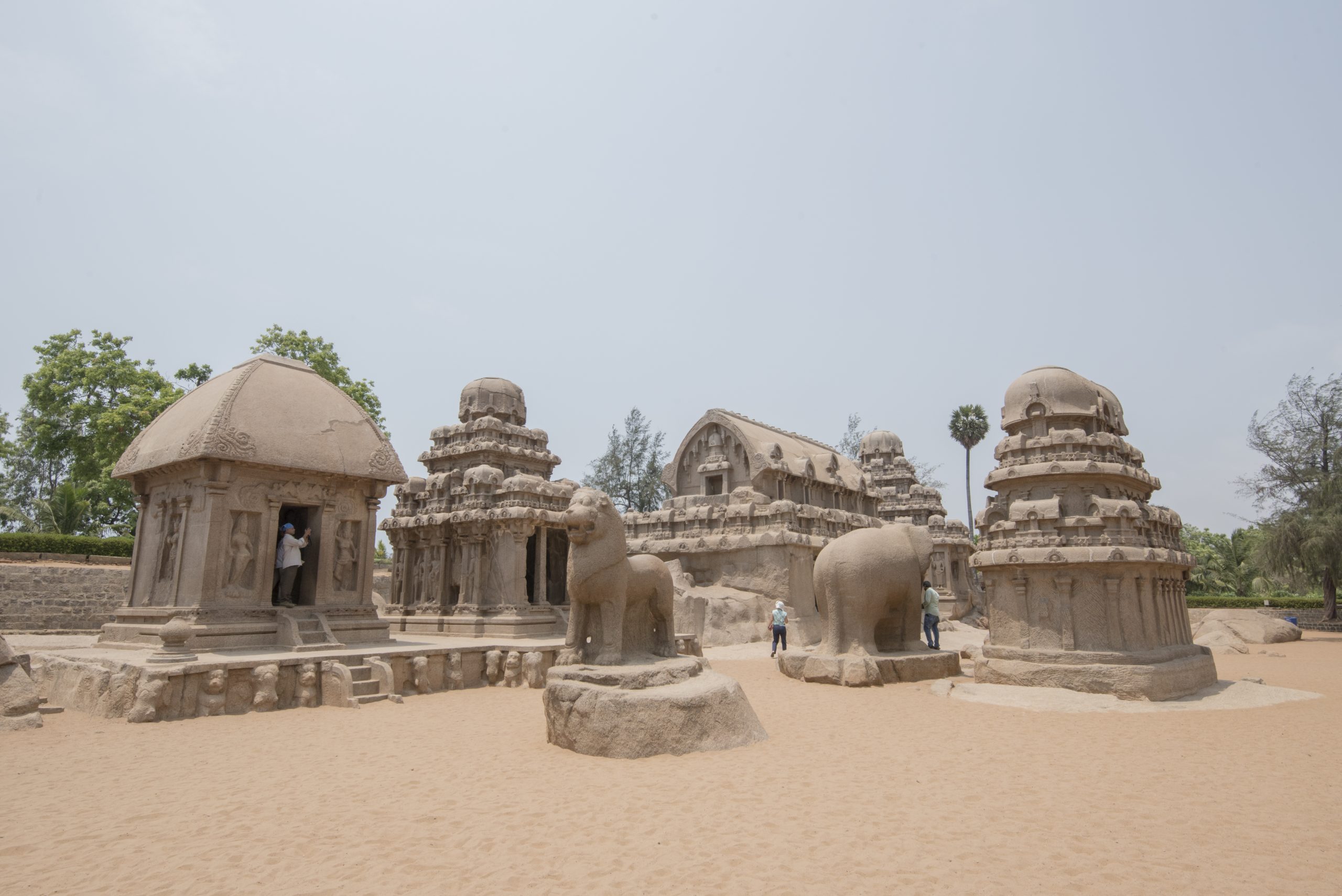
Next to the Pancha Pandava Cave is a very famous bas-relief called ‘Arjuna’s penance’. It depicts the Pandava Prince, Arjuna, praying to Lord Siva for a magical weapon called the Pasupatastra – an entirely ‘believable’ event from the Mahabharata; until some scholars declared that it was Bhagirata, Rama’s ancestor in the Ramayana. That sounds ‘believable’ too and it is not difficult to interpret the bas-relief as the story of the ‘Descent of the Ganges’. So, does this bas-relief depict an event from the Mahabharata or from the Ramayana? We don’t know. Perhaps our ancient sculptors deliberately created a visual pun, just to playfully taunt their gullible descendants!
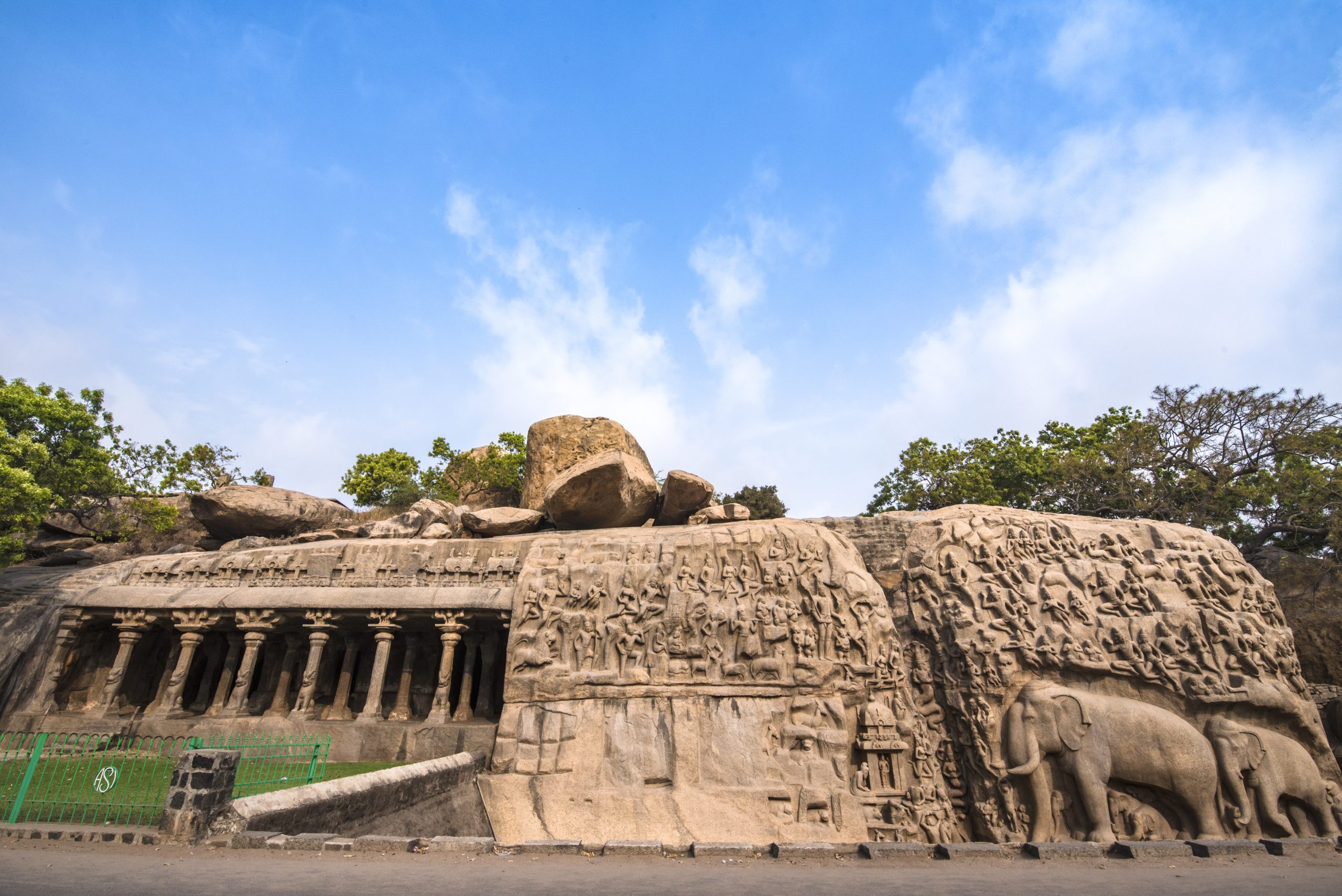
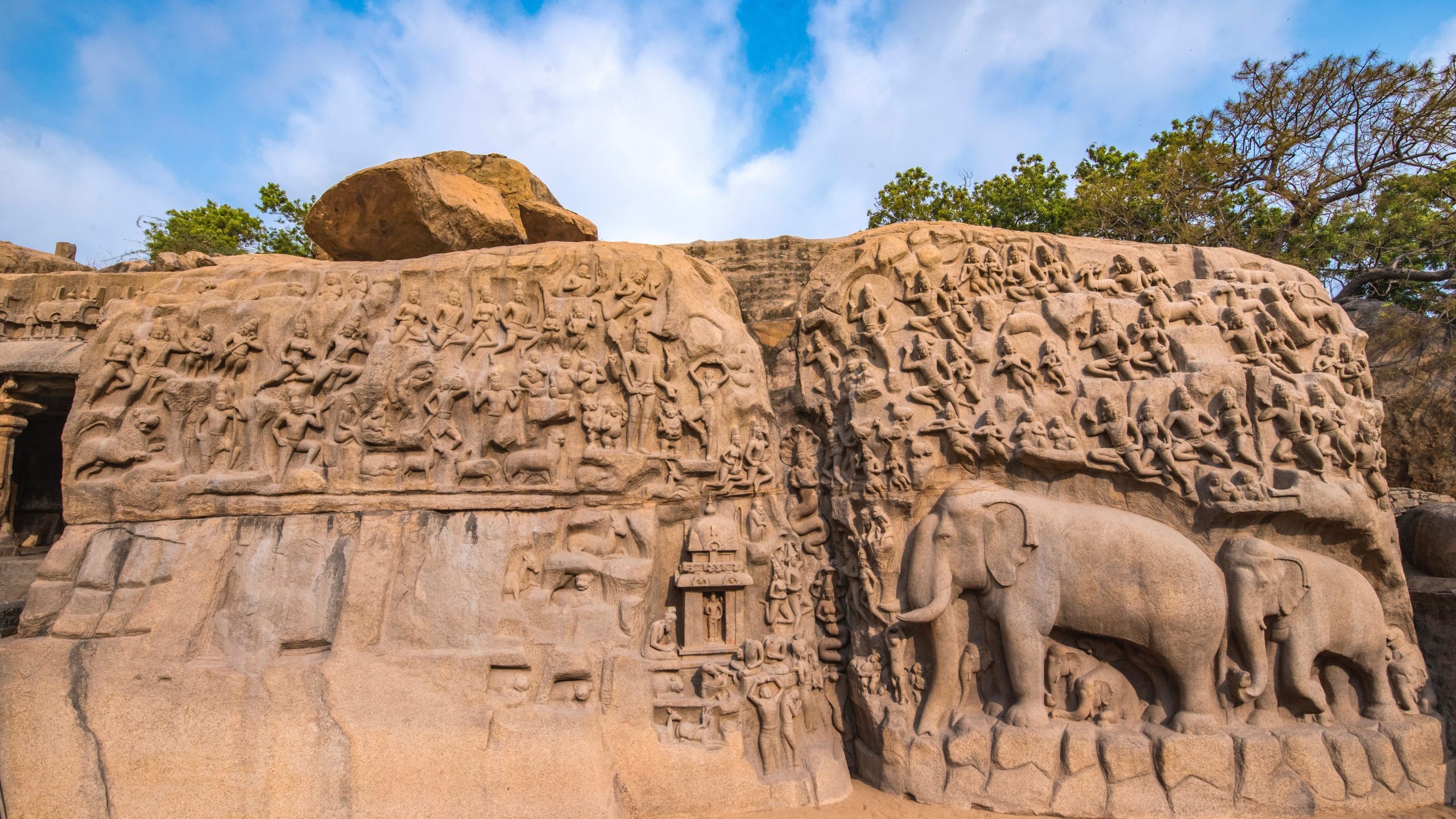
And then, there is the structure called the ‘Ganesha Ratha’. And it has some strange ironies too. Ratha means a chariot. And this is clearly NOT a chariot. Nor was this temple originally dedicated to Ganesha. It was a temple dedicated to Lord Shiva and had a Lingam inside. The Lingam has disappeared over time. Many decades ago the villagers installed a new Ganesha idol inside and started worshipping it instead. It has become the GANESHA Ratha ever since.
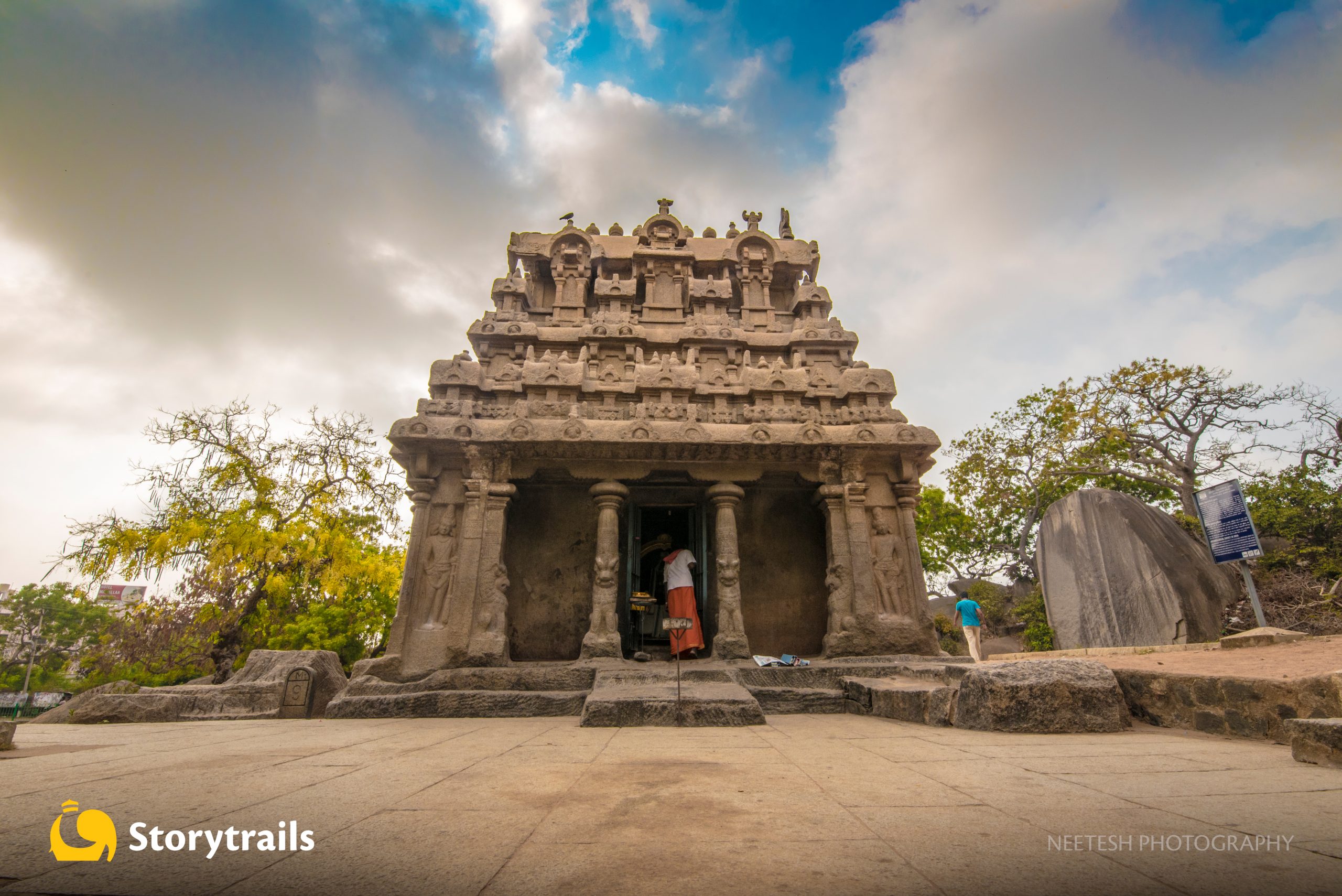
A short walk from the Ganesha Ratha is an amazing natural phenomenon: a 250 Tonne rock that threatens to roll off from a cliff anytime, but has held its peace for centuries.
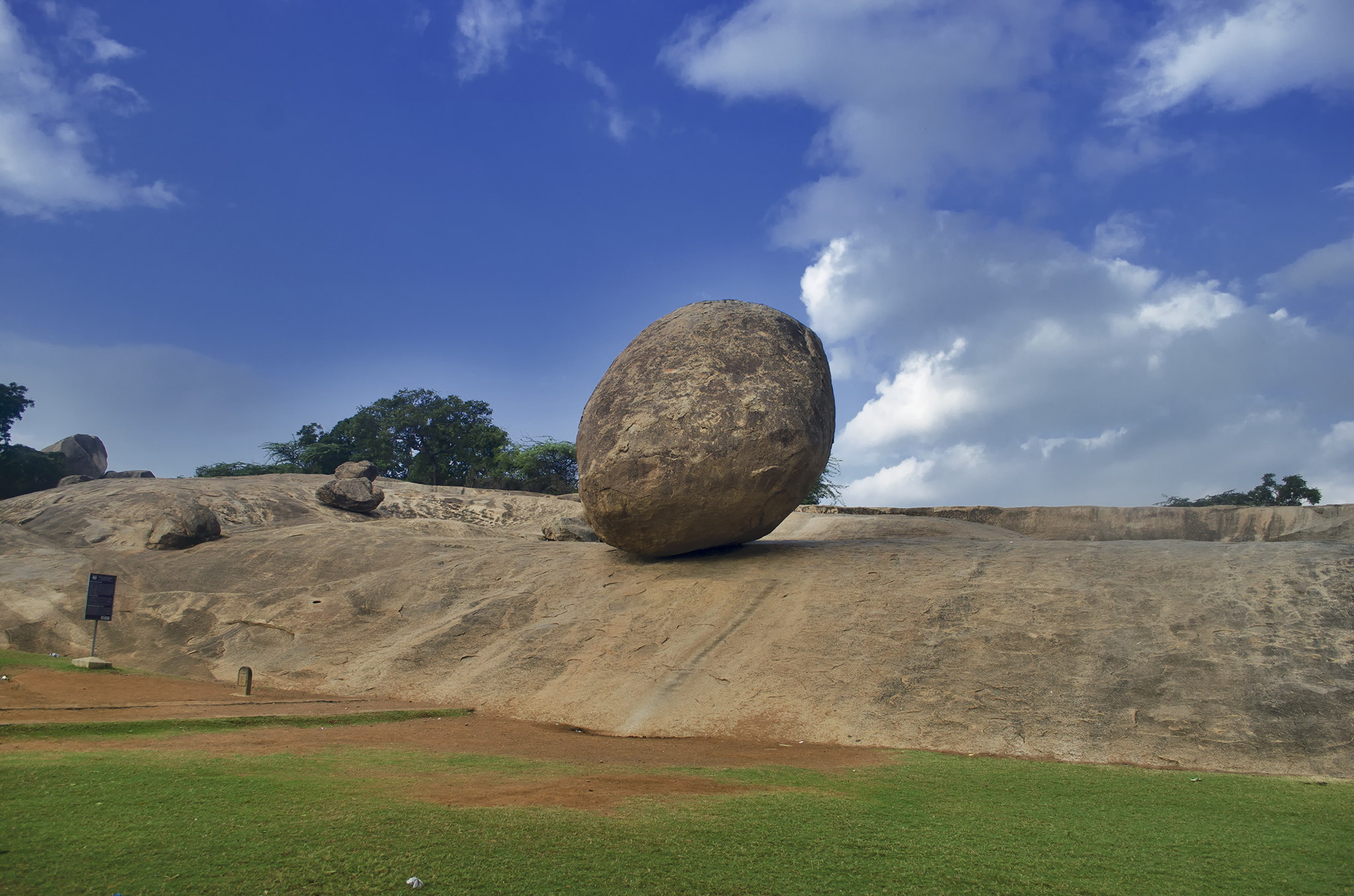
The Pallava sculptors, who left their mark on almost every rock around here, left this huge boulder untouched. Everyone calls it Krishna’s Butter Ball, implying it was not created by a human, but by Lord Krishna. In the Mahabharata, Krishna was Arjuna’s divine mentor. How did the rock get that name? There are many stories, of course and this short video takes you through some of them.
But why were all these structures carved? We don’t know, because many of them were left incomplete. Perhaps they were made because the Pallavas in the 7th century were experimenting with stone and these were readily available designs to copy. Many scholars believe that these were never used as places of worship. For a temple to be consecrated, it has to have a finial – a lotus bud shaped structure installed right at the very top. And in these monuments, you will find those placed on the floor, just near the monument. Were these temples never consecrated or were the finials brought down by invading armies? Sadly, we do not have definitive answers for many such questions. What we do have are many colourful myths that do a wonderful job of filling the gaps and firing our imagination.
Comments are closed.
Archives
- January 2022
- December 2021
- November 2021
- August 2021
- March 2021
- February 2021
- January 2021
- December 2020
- November 2020
- October 2020
- September 2020
- August 2020
- April 2020
- March 2020
- February 2020
- January 2020
- November 2019
- October 2019
- September 2019
- August 2019
- July 2019
- June 2019
- August 2017
- February 2017
- January 2017
- October 2013
Featured Posts
- Tales that pots tell: Keeladi excavations AUGUST 18, 2021
- The Last Grand Nawab: Wallajah FEBRUARY 10, 2021
- How Tej Singh became Raja Desingu of Gingee FEBRUARY 5, 2021
- How Shahjahan seized the Mughal throne JANUARY 28, 2021
- Alai Darwaza – Qutub Minar Complex, Delhi NOVEMBER 21, 2020
- Marking History through British buildings NOVEMBER 17, 2020
- The last great queen of Travancore NOVEMBER 7, 2020
- Brahmi and the evolution of scripts OCTOBER 15, 2020
- The Cambodian King of Kanchipuram OCTOBER 14, 2020
- James Prinsep – the man who read the writing on the wall OCTOBER 10, 2020
- Mariamman – the Village Goddess who travelled SEPTEMBER 30, 2020
- Misnamed Monuments of Mamallapuram SEPTEMBER 28, 2020









What type of stone was used to carve these temples? I visited them in 1975z
The ancient temples of Mamallapuram were carved out of granite, a particularly hard variety of stone, which is available in plenty, locally.